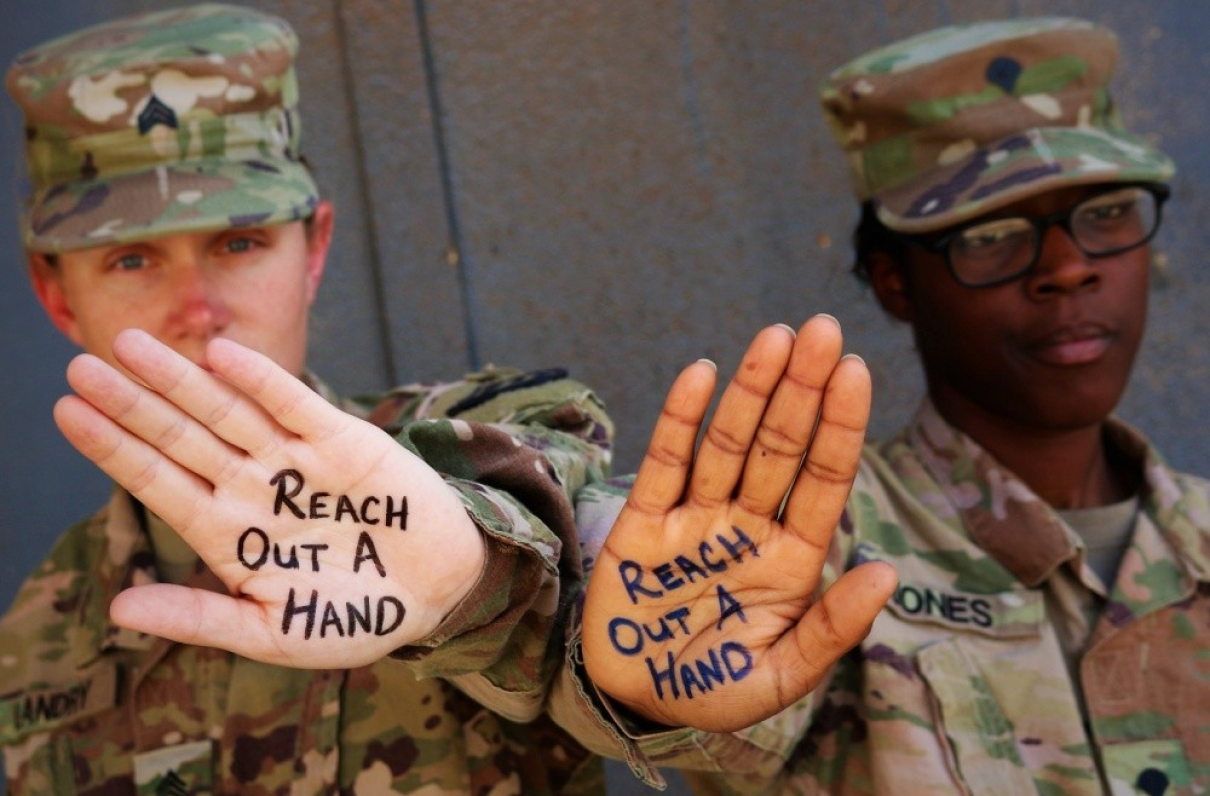DoD's active duty suicide rate fell 15% and the rate of suicides among the reserve component and dependents flattened from 2020 to 2021, according to a recent report – indications that a focus on improving the quality of life for servicemembers and addressing the stigma of seeking help may have made an impact.
The Defense Suicide Prevention Office (DSPO) released the 2021 Annual Suicide Report on Oct. 20. The office was quick to point out suicide remains a problem that must be addressed through a public health approach that requires analyzing rates spanning decades, and the rates are still elevated over a 10-year period.
“While we’re working hard on this problem, we have a lot more to do,” Secretary of Defense Lloyd Austin told reporters in July of last year. “I believe it has to start with removing the stigma attached to mental health issues. Mental health is health, period.”
The active component suicide rate was 24.3 per 100,000 in 2021, down from 28.7 in 2020. Total suicides fell from 582 to 519, with 328 in the active component, 117 in the National Guard, and 74 in the reserves.
DSPO also tracks military families, as defined by dependents enrolled in the Defense Enrollment Eligibility Reporting System (DEERS), and recorded 202 suicides (133 spouses and 69 dependents), which was similar to the previous year and national trends.
[TAKE ACTION: Urge Your Elected Officials to Support FY 2023 NDAA Provisions to Improve Mental Health Care Access]
Financial Health Is Health
“Improving the financial environment where families can thrive directly improves suicide prevention,” said one senior DSPO official.
The highest at-risk population in the service remains young enlisted men with relationship and financial problems.
“I can write a script for Prozac for someone with financial problems, but that isn’t going to help. We have to engage the other resources like a financial counselor,” said Col. Kevin Goke, head of Army Behavioral Health Division, Office of the Army Surgeon General, at a recent family forum hosted by the Association of the U.S. Army (AUSA).
The effects of inflation and stress on servicemembers and military families are apparent. DoD has taken some measures to improve the economic security of servicemembers and families, many of which were outlined in a September press release.
[RELATED: Are DoD’s Latest Efforts to ‘Take Care of Servicemembers and Families’ Enough?]
Improving Quality of Life Supports Suicide Prevention
Secretary Austin in 2021 directed teams to conduct On-Site Installation Evaluations (OSIEs), as recommended by the Independent Review Commission (IRC) on sexual harassment and assault, to look at installations at the local level to examine command climate problems that contributed to negative behaviors. The OSIEs also looked at contributing factors for suicide.
Commands that routinely place mission at the expense of people is an example of one OSIE finding: “At Naval Station Rota [Spain], OSIE teams found that mission requirements were prioritized above and at the expense of the sailors’ wellbeing. This finding was consistently reported across personnel, settings, and helping agencies. Sailors reported experiencing bullying, mental health issues, sexual harassment, and relationship problems for which they could not seek help due to mission requirements.”
The SECDEF has initiated a Suicide Prevention Independent Review Commission (SPRIRC) that will report to Congress in 2023 based off revelations from the sexual harassment and assault IRC.
A professional prevention workforce will also be established as DoD looks to hire 2,000 prevention leaders at installation level. The first cohort of 400 prevention leaders will focus on high-risk installations; DoD is seeking to prioritize hiring military spouses in those roles.
[TAKE ACTION: Urge Your Legislators to Support the Military Spouse Hiring Act]
MOAA will continue to advocate for programs and policies that improve the quality of life for servicemembers and their families through the National Defense Authorization Act (NDAA). The FY 2023 NDAA is on hold until midterm elections are complete; this provides an excellent opportunity to reach out to your lawmakers and ask them to protect the all-volunteer force and improve the quality of life for our servicemembers and their families.
The ongoing recruiting crisis will mean greater stress on those currently serving. Servicemembers are facing the “do more with less” environment as personnel shortages make an impact. Write or call your elected officials and ask them to protect the all-volunteer force.
Support The MOAA Foundation
Donate to help address emerging needs among currently serving and former uniformed servicemembers, retirees, and their families.

